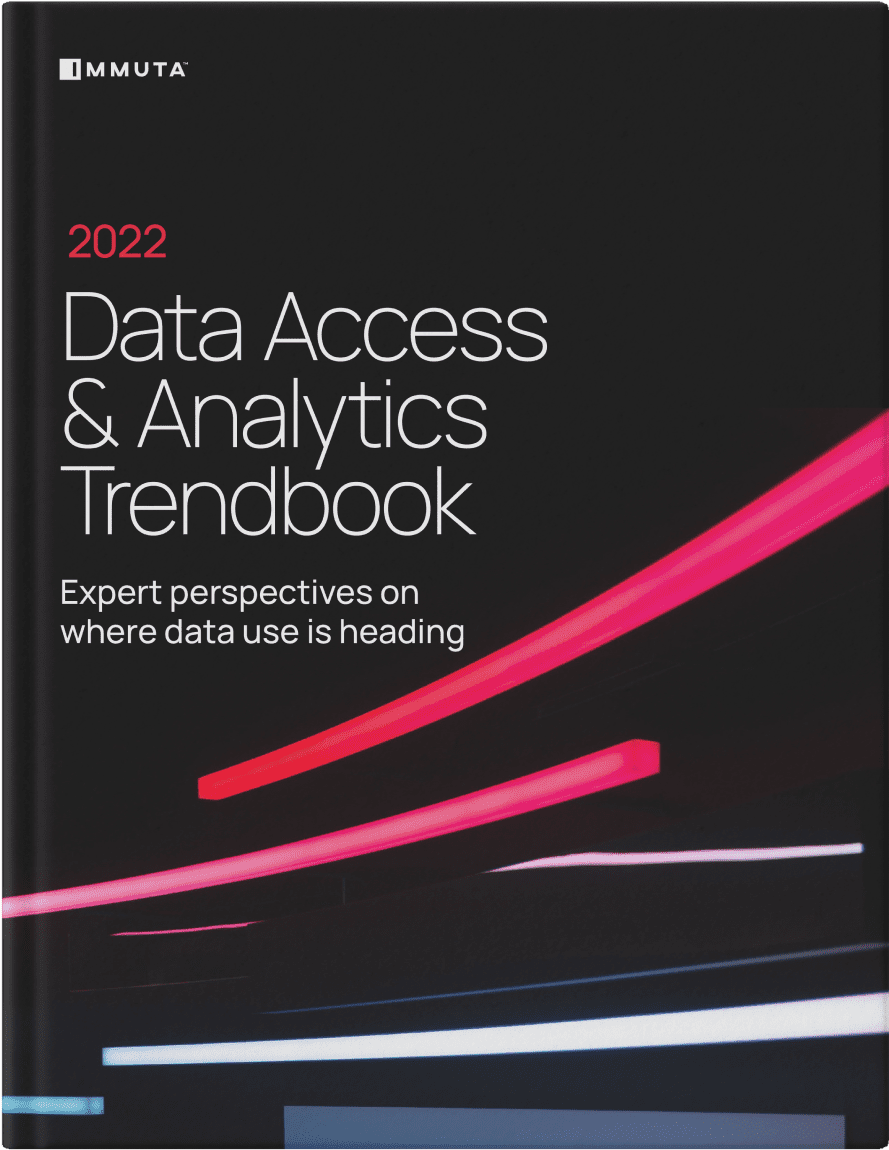2022 Data Access & Analytics Trendbook
Expert perspectives on where data use is heading


The world of data is full of interesting language, complex terms, and more acronyms than a bowl of alphabet soup. Being such a dynamic field, these terms are always being developed, adopted, and adapted to describe new and exciting advances. That said, it’s easy to feel out of the loop on the latest lingo.
Our 2022 Data Access & Analytics Trendbook collects data leaders’ perspectives on where they think data use and the processes that enable it are headed next. As you might expect from a future-oriented piece, this book is overflowing with buzzwords that are becoming increasingly mainstream.
To stay ahead of the curve, we’ve expanded upon some of the most intriguing concepts discussed by these experts.
The selective restriction of access to certain resources in a data ecosystem. Data access control guards against the unauthorized viewing and use of data, which is especially important when that data is sensitive. It’s meant to help guarantee security and compliance with regulations, while still enabling self-service data access and use. Dig in to the evolution of access control here.
Associated with the modern drive for data access, this term signifies a system in which data can be accessed easily and quickly by all users, without bottlenecks. While this goal is key for data efficiency, it can also pose tricky security problems. This is where dynamic attribute-based access control can provide integral support to your data stack.
A set of policies, procedures, processes, and best practices for securing, managing, and deriving value from organizational data. Data governance requires a framework that keeps data secure while simultaneously making it available for analysis. This framework often includes data access control. You can explore more about best practices for modern data governance here.
This refers to the ability to read, analyze, communicate, and work with data. While this seems simple and straightforward, it is a skill that is increasingly necessary for employees of modern data-driven organizations. With data access and use being democratized, it’s integral for personnel to understand how to best use the data they’re addressing.
Snowflake defines a data marketplace as “an online transactional location or store that facilitates the buying and selling of data.” As data becomes an increasingly important resource across industries, there is a growing demand for it to be shared. Whether simply exchanged or sold between businesses, this data enhances research and analysis capabilities while reducing cost and effort.
This type of emerging data architecture confronts the challenges of structures like data warehouses and data lakes. It takes a more decentralized approach to data management, attempting to streamline access and remove potential bottlenecks attributed to who owns what data. For a more in-depth look at data mesh, read our blog.
Short for data operations, DataOps brings together people, processes, and technology in order to quickly deliver data to those who need it. This overarching term denotes the necessary systems organizations put in place in order to make their data operational and usable by employees and other stakeholders.
The combination of technologies that work in unison to compile, organize, clean, and analyze data. These are typically broken out into the categories of Loading, Warehousing, Transforming, and Analytic Use. It is the construction of a data stack that allows for data to be collected and used effectively.
Short for development, security, and operations, this is an approach to software development that bakes automated security into each phase of the development process. This not only makes for more secure software, but it also helps uncover and address security issues early in the process rather than retroactively after implementation.
This kind of architecture facilitates the ELT, or Extract, Load, Transform, data integration process. Data is first extracted (copied) from source locations, then loaded into the new unified storage area, and finally transformed appropriately to facilitate analysis by the data stack. This is a helpful way for data to be pre-processed for efficient analysis that yields insights.
Selecting, manipulating, and/or transforming raw data into “features” that can be used for machine learning purposes. A feature is any sort of measurable input that can be used in a predictive model like ML. This helps create new variables for ML training sets and better optimize these systems.
This is a system of interconnected computing devices, machines, objects, people, and more, that are given unique identifiers in order to transmit data without needing person-to-person or person-to-computer communication. An example of this is health monitors like an Apple Watch or Whoop band, which transmit data about their user to computing devices in order to optimize the user’s health and wellness.
This form of analytics uses forecasting and statistical models in order to predict “What could happen?” Leveraging insights from accrued data allows probabilities to be examined in the context of desired outcomes. This method is aimed at making choices to control and mitigate future risks, choosing action over reaction. For a detailed look at how a data science company enables their predictive analysis at scale, download this report.
In a different fashion, this model of analytics advises on solutions rather than offering predictions. Prescriptive analytics discerns and examines multiple potential futures in order to determine different courses of action. Using machine learning (ML) and modeling, organizations can study massive amounts of data and provide insights into possible routes forward.
Devices that assist in the tokenization of data, which is the process of turning an important piece of data into a string of randomized characters with no meaningful purpose as a means of protection. These remaining “tokens” then serve as references to the original data, but would be useless to anyone who breaches and accesses a system.

Expert perspectives on where data use is heading
While these descriptions offer a baseline understanding of each concept, the best way to learn more is to see what others have to say. Keeping an informed conversation rolling helps continue to drive data use, technologies, and processes towards the horizon of what is possible.
The future of data is created through collaboration. To learn more about the terms above and keep the conversation going, download the 2022 Data Access & Analytics Trendbook here, and follow Immuta on LinkedIn and Twitter to engage with us directly.
If you’d like to have a conversation about how access control can increase your data’s efficiency and security, request an Immuta demo.
Innovate faster in every area of your business with workflow-driven solutions for data access governance and data marketplaces.